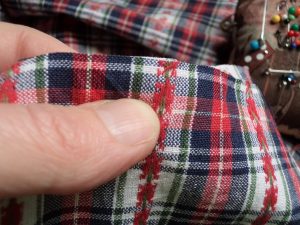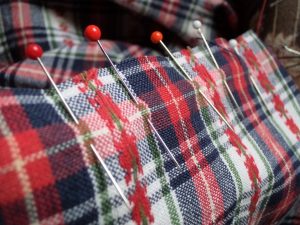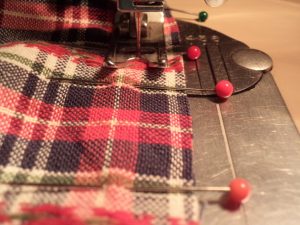Like or loathe it: Matching checks, stripes and junctions

A sign of a well-made garment is perfectly matched seam junctions, checks and stripes. I was reminded of this on the weekend as I dug out some checked fabric to make shirts. Cutting the checks is only half the job; they need to be matched when they’re sewn as well.

To match a check or stripe, place your thumb on the intended stitching line. It really helps if you have thumbnails!

Flip back the seam allowance and match the pattern, with your thumbnail still on the stitching line.
The same sewing technique can also be used for seam junctions such as underarms, across yokes etc.
What if you’re overlocking and can’t use pins? For sure-fire results, stitch the seam first on a regular machine, taking the correct 6mm overlocking seam allowance. Use matching thread! Check that the pattern matches perfectly, then overlock over the top. You don’t have to undo the straight stitching – just pull gently on the seam to pop the stitches if the fabric is stretchy.
In factories, the machinists don’t use pins; they match the checks as they sew. They get a feel for how much the top layer of fabric creeps forward (easier when you handle it all day) and sew accordingly, positioning the top layer slightly back so when it’s sewn it will be in the right place.
Cheers!




